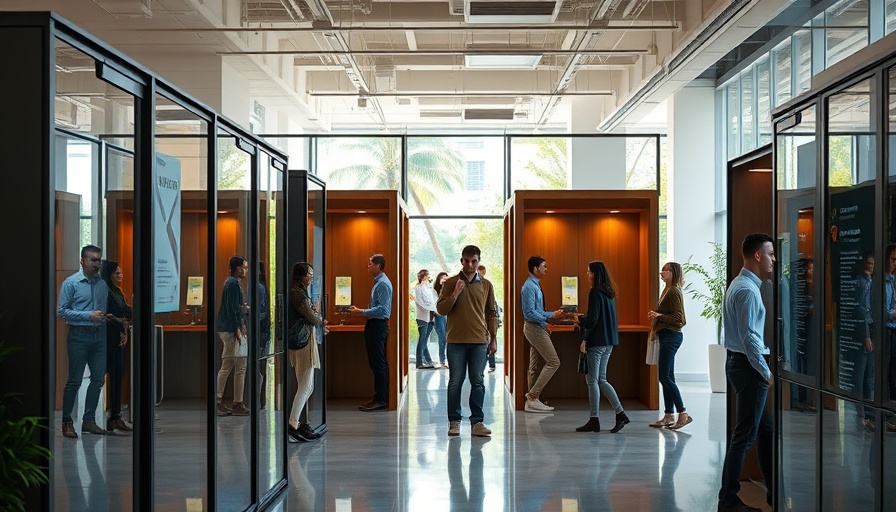
Redefining Work: The Emergence of Flexible Office Spaces
In an era where adaptability has become crucial, the demand for flexible office spaces is soaring across major U.S. cities. This demand isn’t just a post-pandemic trend; it signifies a fundamental shift in how entrepreneurs approach their work environments. Mark Goldfinger, head of Mindspace North America, points out the unique dynamics at play in cities like New York, San Francisco, and Philadelphia.
The Drive for Flexibility: A Shift in Mindset
The pandemic taught employees and employers alike the value of hybrid work models. After nearly three years of virtual meetings, many are experiencing digital fatigue—a longing for face-to-face interactions is pushing businesses back into physical workspaces. Entrepreneurs are recognizing that collaboration often thrives in person, leading to a resurgence in the search for flexible office solutions that can accommodate varied schedules and foster community.
Creating Spaces That Inspire: Mindspace's Offerings
Mindspace isn’t just filling desks; they’re designing environments tailored to the desires of today’s entrepreneurs. From high-speed internet and modern meeting rooms to rooftop lounge areas and fitness amenities, these spaces promote both productivity and well-being. Events, from networking sessions to yoga classes, cater to the holistic needs of modern professionals, encouraging both personal and professional development.
Tailored Approaches: Localizing the Mindspace Experience
What sets Mindspace apart is its ability to adapt to the local culture of each city. For instance, in New York’s Williamsburg neighborhood, Mindspace embraces a creative design with collaborative open layouts. In contrast, other locations may feature designs that align more closely with the high-tech vibe of cities like San Francisco, emphasizing innovation and connectivity.
The Importance of Community in Work Environments
Community plays a vital role in how entrepreneurs engage with their workspaces. With many professionals in bustling cities working around the clock, having access to 24/7 flexible spaces is invaluable. This allows them to harness inspiration whenever it strikes, creating an environment where ideas can flourish freely.
Future Predictions: What Lies Ahead for Workspaces?
As businesses continue to pivot, the future of work environments will likely lean more towards flexibility and community. Major cities may adopt regulations that favor flexible office spaces, further cementing their role in modern work culture. Companies may also begin to merge physical and digital experiences, offering hybrid solutions that deliver both in-person community and virtual accessibility.
Risks and Challenges: Navigating Flexibility
However, with this rise in demand also comes challenges. As more companies adopt flexible work models, potential issues such as workplace burnout and maintaining mental health come to the forefront. Providing support, resources, and conscious design in these workspaces will be key in preventing workplace toxicity and promoting employee well-being.
Conclusion: The Call for Perspective in a Changing Job Market
As the landscape of work continues to evolve, understanding the shifts in office space dynamics is essential for entrepreneurs and business leaders. Embracing the tendencies towards flexibility, community, and well-being can drive success in this new frontier. By adapting to the needs of modern professionals, companies can reshape the future of work.
 Add Row
Add Row  Add
Add 




Write A Comment